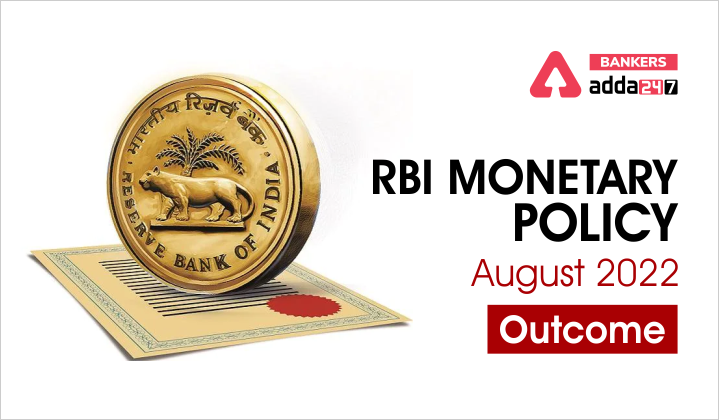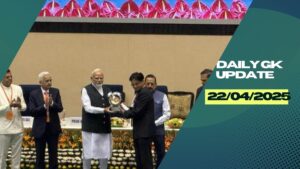Table of Contents
RBI Monetary Policy August 2022: The Reserve Bank of India announced renewed rate hikes in the August 2022 Monetary Policy committee review. The repo rate was hiked by 50 bps to 5.40 per cent. The RBI Governor Shaktikanta Das stated that inflation is a primary concern, and stressed that in the near term will be observing a 4 per cent inflation.
What are main decisions taken by the monetary policy?
The Reserve Bank of India- Monetary Policy Committee increased the repo rate by 50 basis points to take it to pre-pandemic levels. So the present rates are
| CRR | 4.50% |
| SLR | 18% |
| Repo rate | 5.40 (0.50% increase) |
| Reverse repo rate | 3.35% |
| Standing deposit facility (SDF) | 5.15% |
| Marginal standing facility (MSF) | 5.65% |
| Bank rate | 5.65% |
What are the other points shared by the RBI?
♠Surplus liquidity in the banking system, as reflected in average daily absorptions under the LAF (both SDF and variable rate reverse repo auctions) has moderated to ₹3.8 lakh crore during June-July 2022 from ₹6.7 lakh crore during April-May.
♠Bank credit growth has accelerated to 14.0 per cent (y-o-y) as on July 15, 2022 from 5.4 per cent a year ago.
♠The domestic economy faces headwinds from global forces – protracted geopolitical tensions; rising global financial market volatility; tightening global financial conditions; and global recession risks. Taking all these factors into consideration, the real GDP growth projection for 2022-23 is retained at 7.2 per cent, Real GDP growth for Q1:2023-24 is projected at 6.7 per cent.
♠June 2022 was the sixth consecutive month when the headline CPI inflation remained at or above the upper tolerance level of 6 per cent. RBI said its increase in the repo rate has not affected the inflation rate.
♠During the current financial year (up to August 4), the US dollar index (DXY) has appreciated by 8.0 per cent against a basket of major currencies. Rupee depreciated by 4.7 pc against US dollar this fiscal year till August 4.
♠Enabling Bharat Bill Payment System (BBPS) to Process Cross-Border Inbound Bill Payments, meaning Non-Resident Indians (NRIs) to undertake bill payments for utility, education and other such payments on behalf of their families in India. This will greatly benefit the senior citizens in particular.
Important Full forms used in the governor speech
- Weighted average call rate (WACR) – the operating target of monetary policy
- Bharat Bill Payment System (BBPS) -It is an integrated bill payment system in India offering interoperable and accessible bill payment service to customers through a network of agents of registered member as Agent Institutions, enabling multiple payment modes, and providing instant confirmation of payment
- Standalone Primary Dealers (SPDs)– A primary dealer is a bank or other financial institution that has been approved to trade securities with a national government
- Overnight Indexed Swap (OIS)– is an interest rate swap agreement where a fixed rate is swapped against a pre-determined published index of a daily overnight reference rate for example SONIA (GBP) or EONIA (EUR) for an agreed period.
- Mumbai Interbank Outright Rate (MIBOR)– is the interest rate at which banks can borrow funds from other banks in the Indian interbank market.
These fullforms are given in context of the questions asked in recent exams.
Also check:
- Key Points of the Monetary Policy: Check Here
- Repo Rate vs Bank Rate: Most Valuable Differences
- Repo Rate and Reverse Repo Rate: Check Here
Current members of Monetary Policy Committee:
- Shaktikanta Das (Governor of RBI)
- Michael Debabrata Patra (Deputy Governor of RBI),
- Dr Rajiv Ranjan (Executive Director of RBI)
- Jayanth R. Varma (IIM Ahemdabad)
- Ashima Goyal (Indira Gandhi Institute of Development Research,Mumbai)
- Shashanka Bhide senior advisor at the New Delhi-based think tank National Council for Applied Economic Research
General Awareness Quiz Series 2022: 5th August
Govt appointed Suresh N Patel as new Central Vigilance Commissioner
RBI Monetary Policy: Key points
Growth projections: First quarter of the ongoing fiscal have been retained at 16.2%, 6.2% for Q2, 4.1% for Q3 and 4% for Q4, with risks broadly balanced.
Inflation: RBI left the inflation forecast for the country unchanged at 6.7%. It now sees inflation for Q2 at 7.1%; Q3 at 6.4%; and Q4 at 5.8%.
Rupee vs Dollar: Rupee extended gains on Friday. The partially convertible rupee was trading at 78.99 per dollar, compared to 79.16 prior to the policy decision.
For NRIs: RBI has proposed to enable Bharat Bill Payment System to accept cross-border inward bill payments. This will enable NRIs to undertake bill payments.
SPDs: RBI proposes to enable standalone primary dealers to offer all forex market-making facilities. They can offer all forex market-making facilities as permitted for Category-1 authorised dealers.
Recent Posts
| Current Affairs April 2022 | |




 GA Capsule for SBI Clerk Mains 2025, Dow...
GA Capsule for SBI Clerk Mains 2025, Dow...
 The Hindu Review October 2022: Download ...
The Hindu Review October 2022: Download ...
 Daily Current Affairs 22nd April 2025, I...
Daily Current Affairs 22nd April 2025, I...





